POWER AND PATHOS
December 13, 2015 – March 20, 2016
NATIONAL GALLERY OF ART
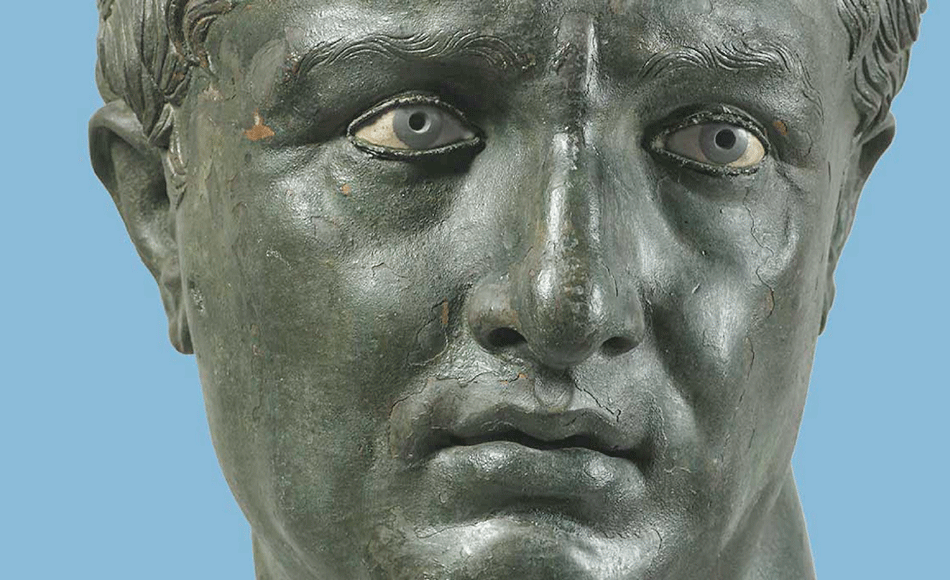
Portrait of a Man, about 100 B.C. Greek, from Delos. Bronze, copper, glass, and stone
Power and emotional intensity
During the Hellenistic era artists around the Mediterranean created innovative, realistic sculptures of physical power and emotional intensity. Bronze—with its reflective surface, tensile strength, and ability to hold the finest details—was employed for dynamic compositions, graphic expressions of age and character, and dazzling displays of the human form.
“The representation of the human figure is central to the art of almost all ancient cultures, but nowhere did it have greater importance, or more influence on later art history, than in Greece,” said Timothy Potts, director of the J. Paul Getty Museum. “It was in the Hellenistic period that sculptors pushed to the limit the dramatic effects of billowing drapery, tousled hair, and the astonishingly detailed renderings of veins, wrinkles, tendons, and musculature, making the sculpture of their time the most life-like and emotionally charged ever made, and still one of the highpoints of European art history.
At its best, Hellenistic sculpture leaves nothing to be desired or improved upon. The more than 50 works in the exhibition represent the finest of these spectacular and extremely rare works that survive, and makes this one of the most important exhibitions of ancient classical sculpture ever mounted. This is a must-see event for anyone with an interest in classical art or sculpture.”
Large-scale bronze sculptures are among the rarest survivors of antiquity; their valuable metal was typically melted and reused. Rows of empty pedestals still seen at many ancient sites are a stark testimony to the bygone ubiquity of bronze statuary in the Hellenistic era. Ironically, many bronzes known today still exist because they were once lost at sea, only to be recovered centuries later.
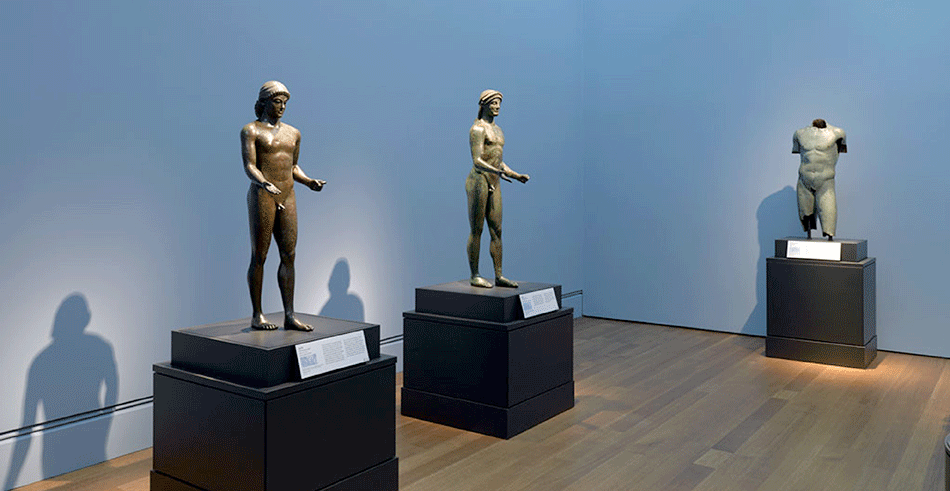
Gallery view, left to right: Apollo, 120-100 B.C. (Musée du Louvre, Département des antiquités grecques, étrusques et romaines, Paris); Apollo, 100 B.C.-A.D. 79 (Soprintendenza Speciale per i Beni Archeologici di Pompei, Ercolano e Stabia); Torso of a Youth, 200-100 B.C. (Georgian National Museum, Vani Archaeological Museum-Reserve)
Power and Pathos: Bronze Sculpture of the Hellenistic World is especially remarkable for bringing together rare works of art that are usually exhibited in isolation. When viewed in proximity to one another, the variety of styles and techniques employed by ancient sculptors is emphasized to greater effect, as are the varying functions and histories of the bronze sculptures. Bronze, cast in molds, was a material well-suited to reproduction, and the exhibition provides an unprecedented opportunity to see objects of the same type, and even from the same workshop together for the first time. For example, two Herms of Dionysos – the Mahdia Herm from the Bardo National Museum, Tunisia and the Getty Herm were made in the same workshop and have not been shown together since antiquity.
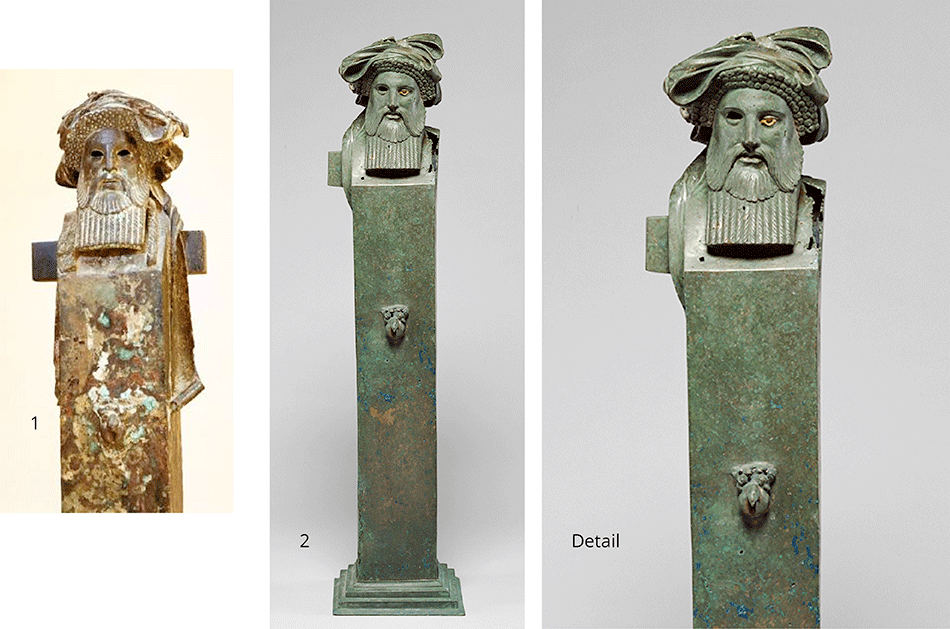 1: Signed by Boëthos of Kalchedon (Greek, active about 200–100 B.C.); Herm of Dionysos, 200–100 B.C. Bronze. Object: H: 103 x W: 24.8 x D: 19.5 cm (40 9/16 x 9 3/4 x 7 11/16 in.); L’Institut National du Patrimoine de la Republique Tunisienne. Photo: Werner Forman/Art Resource, NY. EX.2015.1.35 2: Attributed to the Workshop of Boëthos of Kalchedon (Greek, active about 200–100 B.C.); Herm of Dionysos, 200–100 B.C. Bronze, copper, and stone. Object: H: 103.5 x W (base) 23.5 x D: 19.5 cm (40 3/4 x 9 1/4 x 7 11/16 in.); The J. Paul Getty Museum, 79.AB.138
1: Signed by Boëthos of Kalchedon (Greek, active about 200–100 B.C.); Herm of Dionysos, 200–100 B.C. Bronze. Object: H: 103 x W: 24.8 x D: 19.5 cm (40 9/16 x 9 3/4 x 7 11/16 in.); L’Institut National du Patrimoine de la Republique Tunisienne. Photo: Werner Forman/Art Resource, NY. EX.2015.1.35 2: Attributed to the Workshop of Boëthos of Kalchedon (Greek, active about 200–100 B.C.); Herm of Dionysos, 200–100 B.C. Bronze, copper, and stone. Object: H: 103.5 x W (base) 23.5 x D: 19.5 cm (40 3/4 x 9 1/4 x 7 11/16 in.); The J. Paul Getty Museum, 79.AB.138
“The Mahdia Herm was found off the Tunisian coast in 1907 together with the cargo of an ancient ship carrying many artworks from Greece,” said Jens Daehner, one of the curators of the exhibition. “It is the only surviving case of an ancient bronze signed by an artist (Boëthos of Kalchedon). The idea that the Getty Herm comes from the same workshop is based on the close match of the bronze—an alloy of copper, tin, lead, and other trace elements that’s like the DNA of bronze sculptures. The information that these two works yield when studied together is extraordinary. It is a perfect example of how revealing and instructive it is to contemplate Hellenistic bronzes in concert with one another.”
Among the many famous works is the so-called “Head of a Man from Delos” from the National Museum of Athens, a compellingly expressive portrait with well-preserved inlaid eyes. The dramatic image of an unknown sitter is believed to date from the end of the second or beginning of the first century BC.
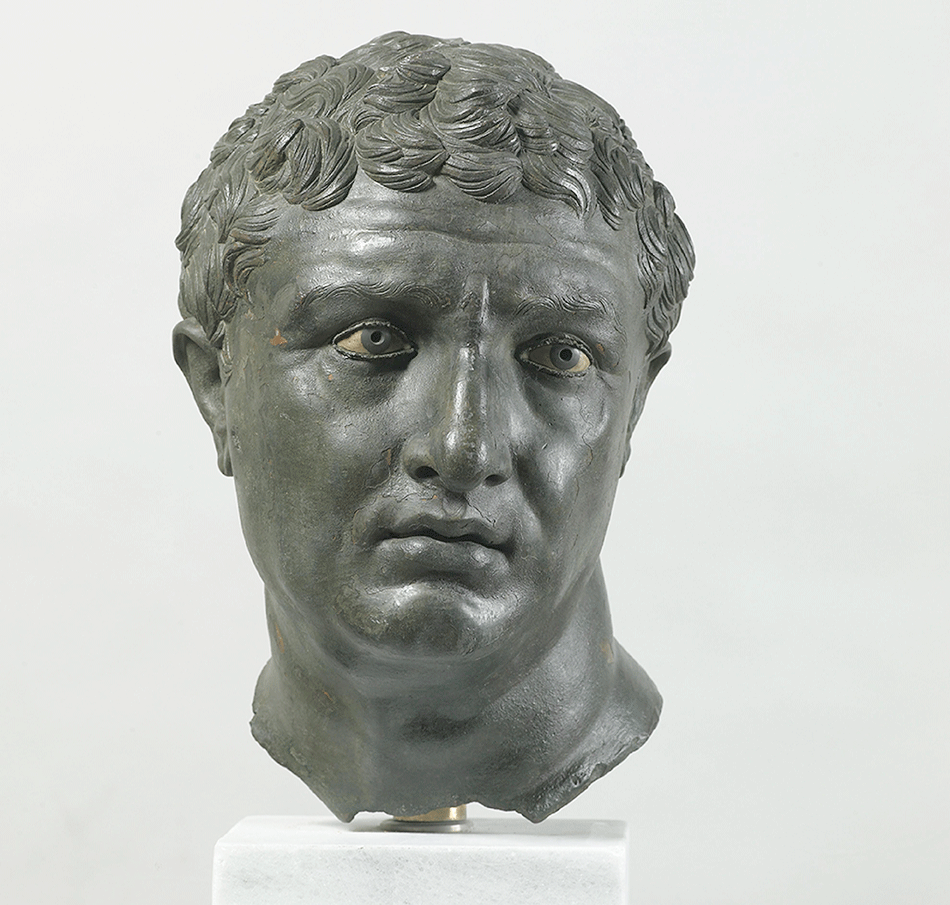
Head of a Man from Delos about 100 B.C. Greek. Bronze, copper, glass, and stone. Object: H: 32.5 x W: 22 x D: 22 cm (12 13/16 x 8 11/16 x 8 11/16 in.); Image courtesy of the Hellenic Ministry of Culture, Education and Religious Affairs. The National Archaeological Museum, Athens. Photo: Marie Mauzy/Art Resource, NY. EX.2015.1.8
The iconic “Terme Boxer” on loan from the National Roman Museum, with its realistic scars and bruises, stands out as the epitome of the modern understanding of Hellenistic art, employing minute detail and an emphatic, arresting subject. The weary fighter, slumped and exhausted after his brutal competition, combines the power and pathos that is unique to Hellenistic sculpture.
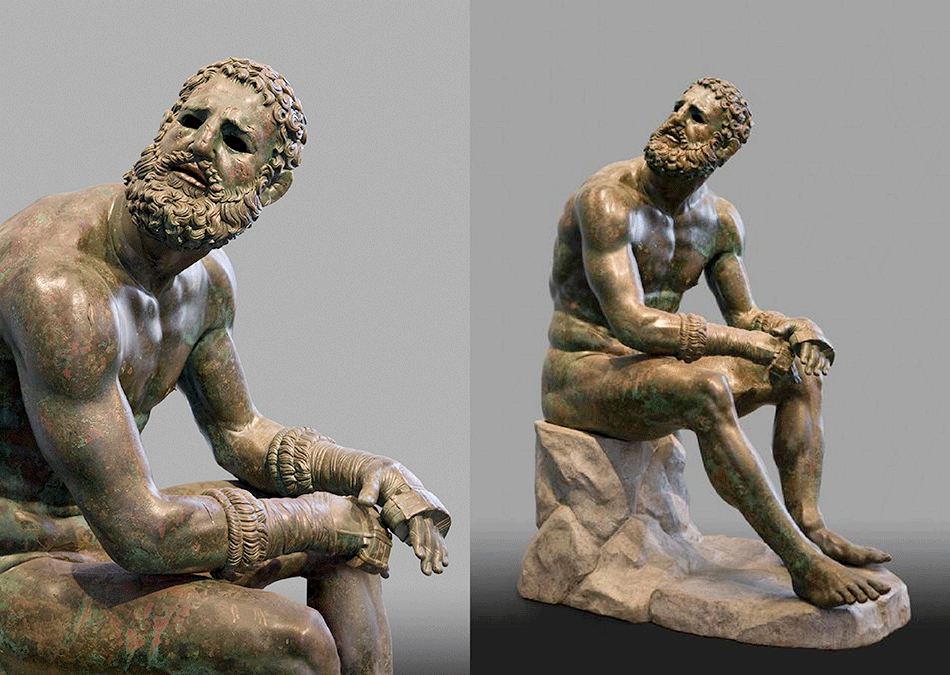
Seated Boxer, “The Terme Boxer,” 300–200 B.C. Greek, from Herculaneum. Bronze and copper. Object (with base): H: 140 x W: 64 x D: 115 cm (55 1/8 x 25 3/16 x 45 1/4 in.); Museo Nazionale Romano – Palazzo Massimo alle Terme Su concessione del Ministero dei beni e delle attività culturali e del turismo – Soprintendenza Speciale per il Colosseo, il Museo Nazionale Romano e l’area archeologica di Roma. Photo © Vanni Archive/Art Resource, NY. EX.2015.1.30
Although rarely surviving today, multiple versions of the same work were the norm in antiquity. A good example is the figure of an athlete shown holding a strigil, a curved blade used to scrape oil and dirt off the skin, known in Greek as the apoxyomenos or “scraper”. This exhibition brings together three bronze casts—two full statues and a head—that are late Hellenistic or early Roman Imperial versions of a statue created in the 300s BC by a leading sculptor of the time. This was obviously one of the most famous works of its time and copies were made well into the Roman Imperial period.
 1: Athlete. “The Croatian Apoxyomenos”, 100–1 B.C. Greek. Bronze and copper. Object: H: 199.8 x W: 60 x D: 50 cm(78 11/16 x 23 5/8 x 19 11/16 in.); Republic of Croatia, Ministry of Culture. Photo: Ljubo Gamulin (Croatian Conservation Institute) EX.2015.1.32: Victorious Athlete, “The Getty Bronze,” 300–100 B.C. Greek. Bronze and copper. Object: H: 151.5 x W: 70 x D: 27.9 cm(59 5/8 x 27 9/16 x 11 in.); The J. Paul Getty Museum, 77.AB.30
1: Athlete. “The Croatian Apoxyomenos”, 100–1 B.C. Greek. Bronze and copper. Object: H: 199.8 x W: 60 x D: 50 cm(78 11/16 x 23 5/8 x 19 11/16 in.); Republic of Croatia, Ministry of Culture. Photo: Ljubo Gamulin (Croatian Conservation Institute) EX.2015.1.32: Victorious Athlete, “The Getty Bronze,” 300–100 B.C. Greek. Bronze and copper. Object: H: 151.5 x W: 70 x D: 27.9 cm(59 5/8 x 27 9/16 x 11 in.); The J. Paul Getty Museum, 77.AB.30
Exhibition Highlights
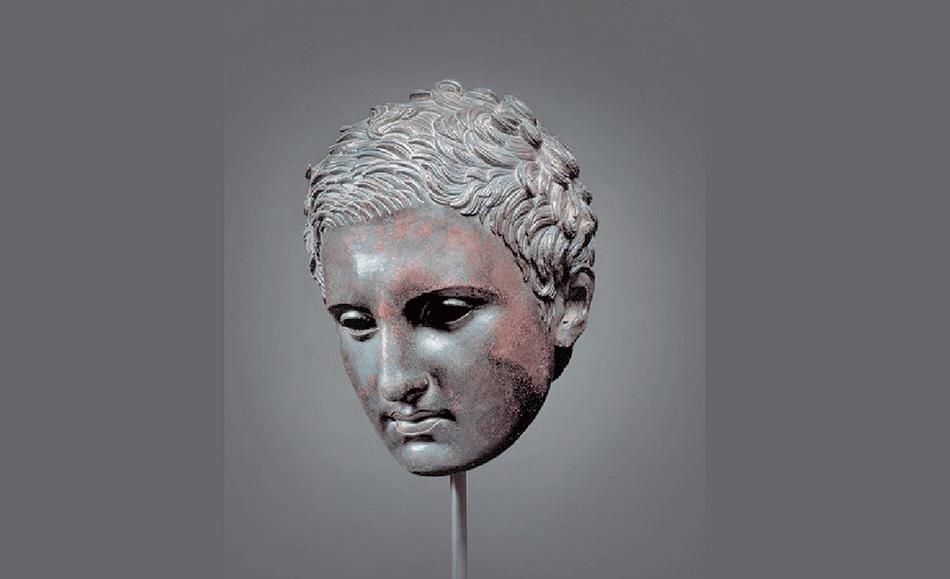
Head of an Athlete (Ephesian Apoxyomenos type), 200–1 B.C. Greek. Bronze and copper. Object: H: 29.2 x W: 21 x D: 27.3 cm (11 1/2 x 8 1/4 x 10 3/4 in.); Image courtesy of Kimbell Art Museum, Fort Worth, Texas/Scala, Firenze. EX.2015.1.50
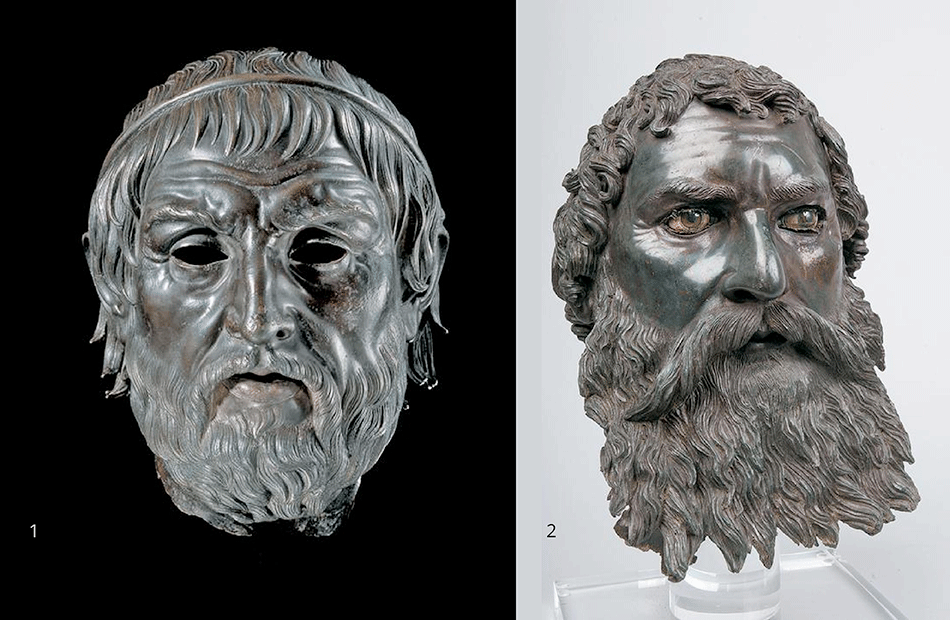 1: Portrait of a Poet, “The Arundel Head”, 200–1 B.C. Greek. Bronze and copper. Object: H: 41 x W: 21 x D: 26 cm (16 1/8 x 8 1/4 x 10 1/4 in.); Image courtesy of and © The Trustees of the British Museum. EX.2015.1.392: Portrait of Seuthes III, about 310–300 B.C. Greek. Bronze, copper, calcite, alabaster, and glass. Object: H: 32 x W: 28 x D: 27.9 cm (12 5/8 x 11 x 11 in.);Image courtesy of National Institute of Archaeology with Museum, BAS. Photo: Krasimir Georgiev. EX.2015.1.2
1: Portrait of a Poet, “The Arundel Head”, 200–1 B.C. Greek. Bronze and copper. Object: H: 41 x W: 21 x D: 26 cm (16 1/8 x 8 1/4 x 10 1/4 in.); Image courtesy of and © The Trustees of the British Museum. EX.2015.1.392: Portrait of Seuthes III, about 310–300 B.C. Greek. Bronze, copper, calcite, alabaster, and glass. Object: H: 32 x W: 28 x D: 27.9 cm (12 5/8 x 11 x 11 in.);Image courtesy of National Institute of Archaeology with Museum, BAS. Photo: Krasimir Georgiev. EX.2015.1.2
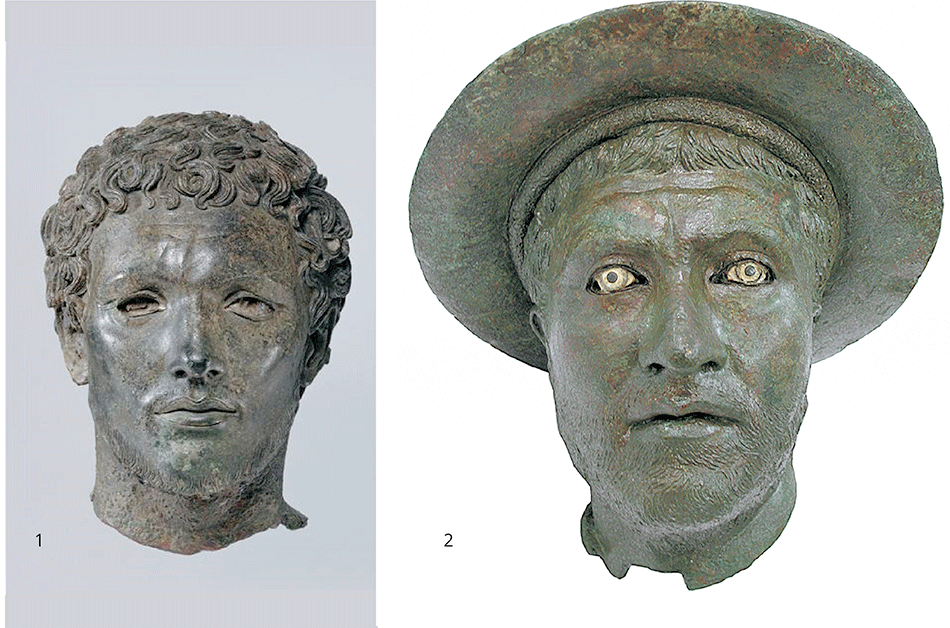 1: Portrait of a North African Man, from Cyrene (in present day Libya), 300–150 B.C. Greek. Bronze, copper, enamel, and bone Object: H: 27 x W: 20 x D: 24 cm (10 5/8 x 7 7/8 x 9 7/16 in.), Image courtesy of and © The Trustees of the British Museum. EX.2015.1.412: Portrait of a Man, 300–200 B.C. Greek, found in the Aegean Sea near Kalynmos. Bronze, copper, glass, and stone. Object (greatest extent): H: 32 x W: 27.9 x Diam.: 98 cm (12 5/8 x 11 x 38 9/16 in.); Image courtesy of the Hellenic Ministry of Culture, Education and Religious Affairs. The Archaeological Museum of Kalymnos. Image copyright © Hellenic Ministry of Culture and Sports/Archaeological Receipts Fund. EX.2015.1.10
1: Portrait of a North African Man, from Cyrene (in present day Libya), 300–150 B.C. Greek. Bronze, copper, enamel, and bone Object: H: 27 x W: 20 x D: 24 cm (10 5/8 x 7 7/8 x 9 7/16 in.), Image courtesy of and © The Trustees of the British Museum. EX.2015.1.412: Portrait of a Man, 300–200 B.C. Greek, found in the Aegean Sea near Kalynmos. Bronze, copper, glass, and stone. Object (greatest extent): H: 32 x W: 27.9 x Diam.: 98 cm (12 5/8 x 11 x 38 9/16 in.); Image courtesy of the Hellenic Ministry of Culture, Education and Religious Affairs. The Archaeological Museum of Kalymnos. Image copyright © Hellenic Ministry of Culture and Sports/Archaeological Receipts Fund. EX.2015.1.10
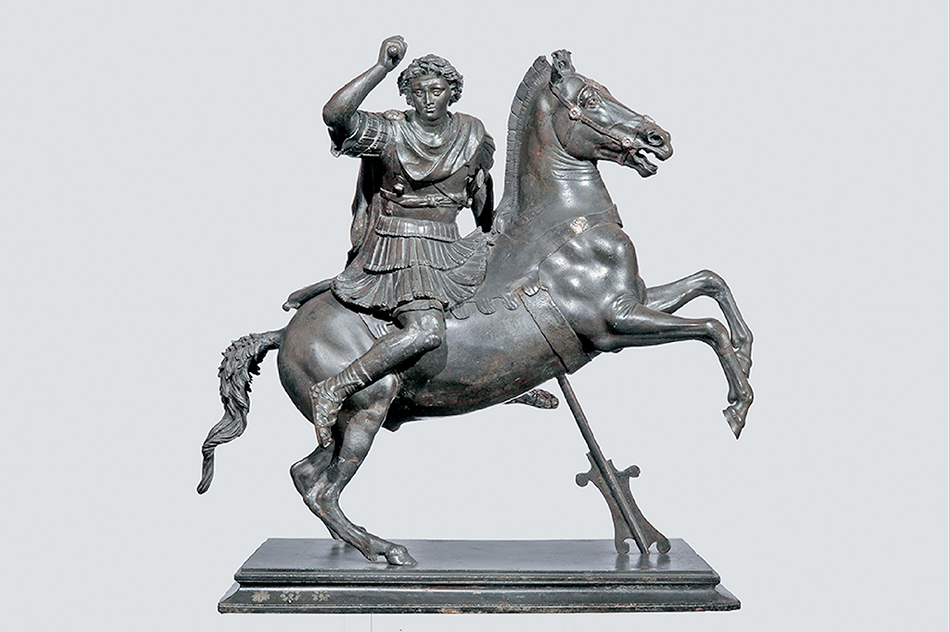
Alexander the Great on Horseback, 100–1 B.C. Greek. Bronze and silver. Object: H: 51 x W: 29 x D: 51 cm (20 1/16 x 11 7/16 x 20 1/16 in.), Su concessione Ministero dei Beni e delle Attività Culturali e del Turismo – Soprintendenza per i Beni Archeologici di Napoli – Foto Giorgio Albano. EX.2015.1.25
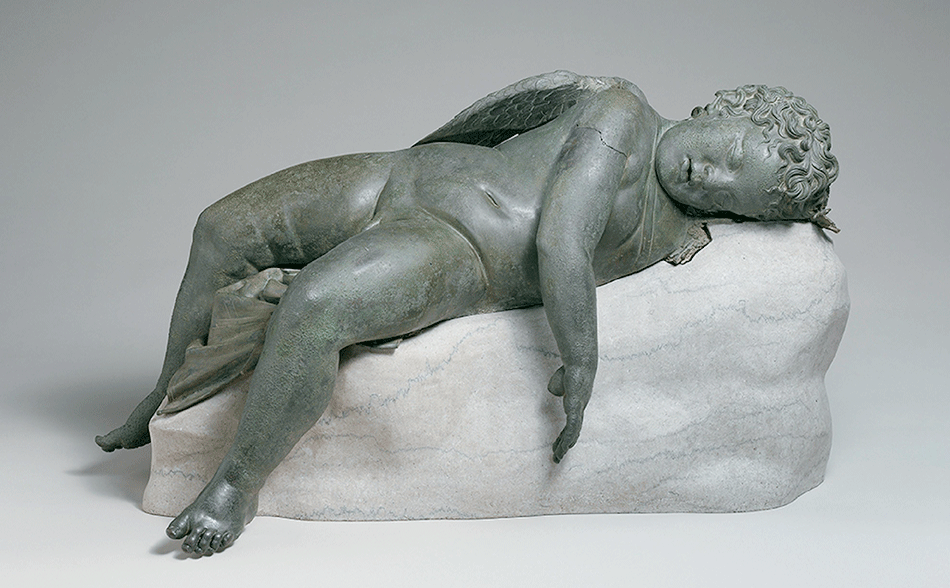
Sleeping Eros, 300–100 B.C. Greek. Bronze (with a modern marble base) Object: H: 41.9 x D: 35.6 x W: 85.2 cm(16 1/2 x 14 x 33 9/16 in.) The Metropolitan Museum of Art, Rogers Fund, 1943 (43.11.4) Image © The Metropolitan Museum of Art/Scala, Firenze. EX.2015.1.55

Weary Herakles, A.D. 1-100, bronze, copper, and silver. Museo Archeologico Nazionale dell’Abruzzo Villa Frigerj. Su gentile concessione della Direzione Regionale per i Beni Culturali e Paesaggistici dell’Abruzzo: Soprintendenza per i Beni Archeologici dell’Abruzzo—Chieti
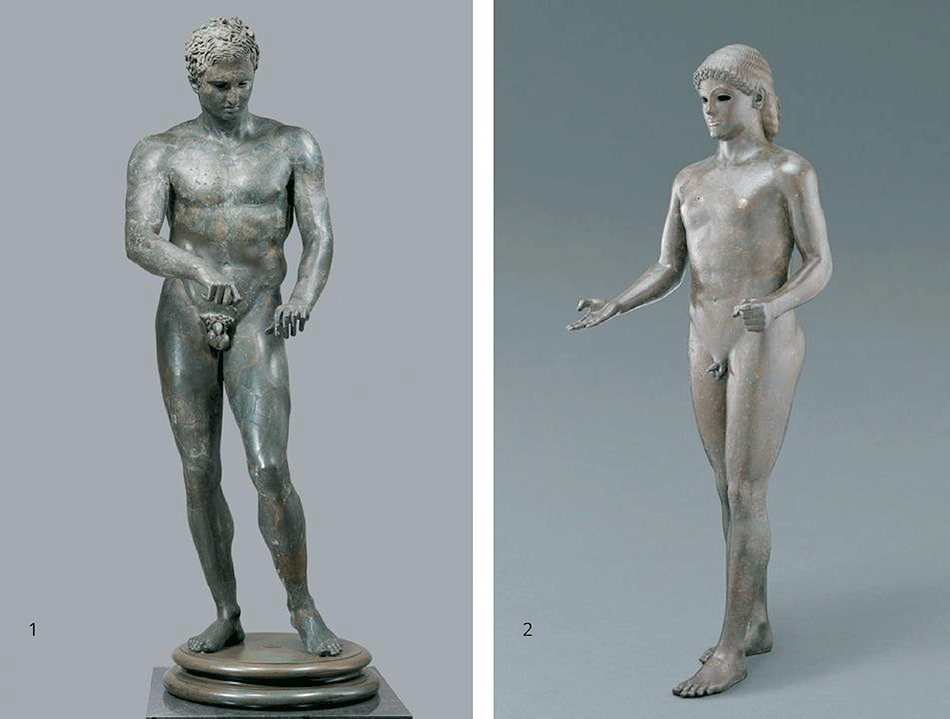 1: Athlete, “The Ephesian Apoxyomenos”, A.D. 1–90. Greek. Bronze and copper. Object: H: 205.4 x W: 78.7 x D: 77.5 cm (80 7/8 x 31 x 30 1/2 in.); Kunsthistorisches Museum Wien, Antikensammlung. Image © KHM-Museumsverband. Collection of Greek and Roman Antiquities / Ephesos Museum. EX.2015.1.12: Apollo, “The Piombino Apollo,” about 120–100 B.C. Greek. Bronze, copper, and silver. Object: H: 117 x W: 38.1 x D: 33 cm (46 1/16 x 15 x 13 in.),; Musée du Louvre, Département des antiquités grecques, étrusques et romaines, Paris. Image © RMN-Réunion des Musées Nationaux – Foto Stéphane Maréchalle. EX.2015.1.54.1
1: Athlete, “The Ephesian Apoxyomenos”, A.D. 1–90. Greek. Bronze and copper. Object: H: 205.4 x W: 78.7 x D: 77.5 cm (80 7/8 x 31 x 30 1/2 in.); Kunsthistorisches Museum Wien, Antikensammlung. Image © KHM-Museumsverband. Collection of Greek and Roman Antiquities / Ephesos Museum. EX.2015.1.12: Apollo, “The Piombino Apollo,” about 120–100 B.C. Greek. Bronze, copper, and silver. Object: H: 117 x W: 38.1 x D: 33 cm (46 1/16 x 15 x 13 in.),; Musée du Louvre, Département des antiquités grecques, étrusques et romaines, Paris. Image © RMN-Réunion des Musées Nationaux – Foto Stéphane Maréchalle. EX.2015.1.54.1
Power and Pathos: Bronze Sculpture of the Hellenistic World
December 13, 2015 – March 20, 2016. West Building, Ground Floor
Admission is Free
Opening Times: Monday through Saturday from 10:00 a.m. to 5:00 p.m.
and Sunday from 11:00 a.m. to 6:00 p.m. The Gallery is closed on December 25 and January 1.
* The exhibition Power and Pathos: Bronze Sculpture of the Hellenistic World was organized by the J. Paul Getty Museum, the Fondazione Palazzo Strozzi in Florence, and the National Gallery of Art in Washington with the participation of the Soprintendenza per i Beni Archeologici della Toscana.
Exhibition Catalogue
 Power and Pathos
Power and Pathos
368 pages
9 5/8 x 11 3/8 inches
164 color
illustrations
ISBN 978-1-60606-440-5
paperback
$45.00
The exhibition is accompanied by a publication, also titled Power and Pathos: Bronze Sculpture of the Hellenistic World, edited by Daehner and Lapatin. The richly illustrated book is the first comprehensive volume on large-scale Hellenistic bronze statuary and includes significant new research in archaeological, art-historical, and scientific essays. Published by Getty Publications, it is designed to be the standard reference on the subject.
Jens M. Daehner is associate curator in the Department of Antiquities at the J. Paul Getty Museum and coauthor of Modern Antiquity: Picasso, De Chirico, Léger, Picabia (Getty Publications, 2011). Kenneth Lapatin is associate curator in the Department of Antiquities at the J. Paul Getty Museum. He is the editor of The Berthouville Silver Treasure and Roman Luxury (Getty Publications, 2014) and coeditor of The Last Days of Pompeii: Decadence, Apocalypse, Resurrection (Getty Publications, 2012)
Sponsors:
Bank of America is the National Sponsor of this touring exhibition.
The exhibition is also made possible through a generous gift from an anonymous donor.
The Marshall B. Coyne Foundation has provided additional support through
the Fund for the International Exchange of Art.
This exhibition is supported by an indemnity from the Federal Council on the Arts and the Humanities.
* The Los Angeles presentation was supported by the Getty Museum’s Villa Council, Vera R. Campbell Foundation, and the A. G. Leventis Foundation.